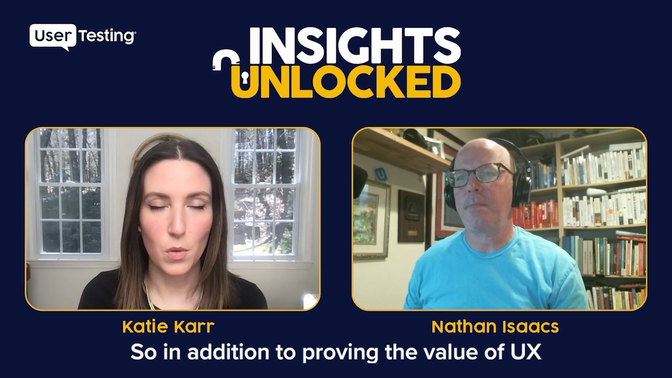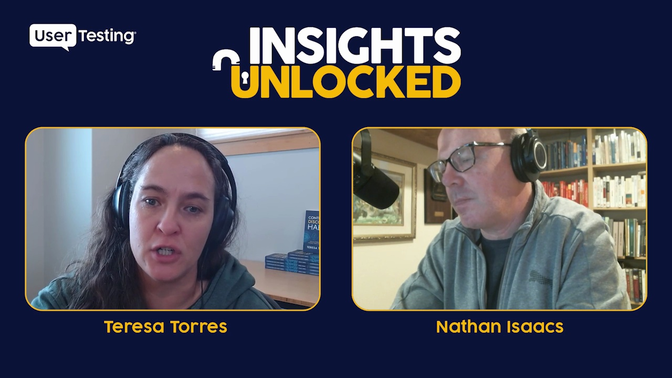
What is market research?

Imagine designing a product without ever seeing how people use it. You might get some things right but would definitely get plenty wrong.
Market research removes that guesswork, helping you see your audience clearly so every decision feels grounded in reality.
“The ability to test and optimize our message prior to launch removes the guesswork, providing peace of mind internally and ultimately creating improved brand clarity, more qualified leads, and an increase in ROI on all marketing activities,” said Katie Karr, Senior User Experience Designer at Workiva, in an Insights Unlocked interview.

At its core, market research is the process of gathering and analyzing information about your target audience, competitors, and industry trends. It’s how organizations turn data into direction, understanding not only what customers do, but why they do it. That’s where empathy becomes a competitive advantage.
Market research is the process of gathering and analyzing information about your target audience, competitors, and industry trends.
Why market research is important
Market research reduces risk and builds confidence. It helps businesses identify the right opportunities, avoid costly missteps, and stay attuned to what customers truly want.
“Every good experience that you create with your customer is part of your brand, so is every bad experience,” said Kristy Morrison, Senior Manager, Digital Intelligence & Optimization at F5, in an Insights Unlocked interview. “Sometimes you focus so much on creating this big, beautiful customer journey and you forget that the button doesn’t click or the copy isn’t readable.”

Research can uncover insights like:
- Which markets are growing fastest
- What motivates people to buy (or not buy) your product
- How satisfied your customers really are
- What competitors are doing differently
- Where you can stand out
Companies that invest in ongoing research are better equipped to adapt quickly, whether they’re launching something new or fine-tuning what already works. In a fast-moving market, understanding people isn’t just smart strategy—it’s survival.
And when you approach research with empathy, the impact goes beyond the bottom line. You don’t just create products or messages; you create connections that last.
“A lot of people think that user research is about obsessing over users, and it is, but I think one thing that's made my organization successful is we obsess over business results,” said Eric Mahlstedt, head of user research for the cloud data and AI business units at IBM. “We ask a lot of questions. UserTesting helps us turn our assumptions into evidence and each of those experiments helps the business move forward with more confidence.”
How market research helps your business grow
Market research is more than a planning tool, it’s a growth engine.
“Our results really showed that the updated messaging was resonating better with our target audience,” Katie said. “We were able to quantify almost a 30% increase in the clarity of our messaging.”
By grounding decisions in evidence and experience, research helps businesses:
- Spot new opportunities: Discover unmet needs, emerging trends, and untapped audiences.
- Refine products and services: Gather feedback to shape features, usability, and pricing.
- Strengthen brand positioning: Understand how your brand is perceived and how to differentiate it.
- Improve marketing effectiveness: Align messaging with what resonates most with customers.
- Increase retention: Identify what drives loyalty and what causes customers to leave.
Every growing business has one thing in common: they listen. The best growth strategies start with a deep understanding of real people—their motivations, frustrations, and expectations—and then act on it.
The best growth strategies start with listening to real people and acting on what you learn.
When to use market research
There’s no wrong time for research—but certain moments demand it:
- Before launching a new product or service
- When entering a new market or region
- During a rebrand or repositioning effort
- When sales or satisfaction decline
- To test pricing or messaging
- To validate new concepts or prototypes
Many organizations treat research as a one-time project, but it’s most valuable when it’s continuous. Ongoing research helps teams stay close to customer sentiment and anticipate change before it happens.
“How do we learn from our customers about what they need, what their unmet needs, pain points, and desires are? And then how do we design solutions to closely match that,” said Teresa Torres, Author of Continuous Discovery Habits in an Insights Unlocked interview.

Think of it as keeping your finger on the pulse of your audience—not just checking it once in a while.
ON-DEMAND WEBINAR
Proving the value of insights: connecting customer experience, NPS, and business impact
The main types of market research
Market research can be grouped into four broad categories, each offering unique insights:
- Primary research: Collecting original data directly from your target audience through interviews, surveys, or observation.
- Secondary research: Using existing data from trusted sources—like industry reports, databases, or published studies—to identify trends and benchmarks.
- Qualitative research: Exploring motivations, perceptions, and emotions through open-ended feedback.
- Quantitative research: Measuring behaviors and attitudes using structured data and analytics.
Together, these methods form a full picture: the “what,” “how,” and “why” behind customer behavior.
The best primary research methods
Primary research lets you hear directly from your audience. These methods help uncover insights that numbers alone can’t:
- Surveys: Gather structured feedback at scale to measure attitudes or behaviors.
- Interviews: Explore deeper motivations through one-on-one conversations.
- Focus groups: Bring people together to discuss perceptions and ideas.
- Observation: Watch how customers use products in real-world settings.
- Experiments: Test variations (like different messages or designs) to see what performs best.
Each method offers a window into human behavior, one that’s clearer when paired with real-world context. Seeing how people actually interact with your brand provides understanding that goes beyond words.
The best secondary research methods
Secondary research builds on what’s already known, saving time and resources. Common sources include:
- Industry and market reports for trends and forecasts
- Government and economic data for demographic insights
- Academic research for methodologies and validation
- Competitor websites and press releases for positioning cues
- Trade associations for sector-specific data
Before relying on secondary data, always assess the source’s credibility and relevance. The most effective strategies blend these external insights with firsthand customer feedback, providing both macro trends and micro understanding.
The best qualitative research methods
Qualitative research focuses on depth—understanding the “why” behind behavior. The best methods include:
- In-depth interviews for detailed personal insights
- Ethnographic research that observes customers in their real environments
- Open-ended surveys to gather rich narrative responses
- Video diaries or user recordings to capture authentic experiences over time
- Online communities for ongoing discussions and feedback
These methods reveal the human stories behind decisions, helping teams empathize with customers and design experiences that feel intuitive and personal.
Numbers can tell you what happened. Stories reveal why it matters.
Key steps in conducting market research
Successful market research follows a logical progression. While every project is different, the process typically includes:
- Define the objective: Clarify what you’re trying to learn and why it matters to your business.
- Identify your audience: Determine who you’re researching and how best to reach them.
- Choose your method: Select the right mix of qualitative and quantitative tools.
- Collect your data: Ensure data accuracy, ethical practices, and consistent methodology.
- Analyze results: Look for patterns, connections, and actionable insights.
- Share findings: Communicate results in ways that engage and inspire action.
- Act and iterate: Apply what you’ve learned, then measure the impact and repeat.
This isn’t a one-and-done process. Great research is cyclical—each study builds on the last to continually refine understanding and outcomes.
Measuring success
The success of market research goes beyond dashboards and KPIs. Still, metrics play a crucial role. Businesses often evaluate outcomes based on:
- Brand awareness or perception lift
- Customer satisfaction (CSAT)
- Net Promoter Score (NPS)
- Share of market or audience growth
- Conversion rate improvements
- ROI from marketing or product investments
Banco Sabadell uses UserTesting’s QXscore® as a benchmark for digital experience quality, requiring all designs to meet a minimum score of 85 before going live. This standardization helped the bank increase research velocity by 50% and improve customer satisfaction by validating usability and adoption early in the design process.

But the deeper measure of success? When insights inspire change—when empathy leads to action, and that action leads to better customer experiences.
The best tools and techniques for market research
Technology has expanded what’s possible in research, giving teams faster, richer access to insights. Here are some essential categories of tools:
- Survey platforms to collect structured data efficiently
- Video and usability platforms to observe authentic human interactions
- Analytics dashboards to track patterns and quantify trends
- Social listening tools to monitor sentiment and competitor conversations
- Data visualization software to make findings easier to share and act on
The most powerful tools don’t just deliver data—they capture human reactions, expressions, and context. That’s what turns research from information into insight.
The best tools don’t just collect data—they reveal the people behind it.
How to conduct marketing research
Modern marketing research combines data accuracy with empathy. Follow these best practices:
- Start with clarity. Define a focused question or hypothesis.
- Ensure data integrity. Use reliable methods and clean, representative samples.
- Stay current. Regularly refresh insights to reflect shifting behavior or sentiment.
- Respect privacy. Maintain transparency and obtain consent from participants.
- Collaborate widely. Involve marketing, design, and product teams early.
- Act quickly. Turn findings into action while insights are still fresh.
When research is embedded into the organization’s rhythm, it becomes a catalyst for continuous improvement.
Sharing market research findings with stakeholders
Insights only matter when they’re understood and used. Presenting findings effectively means turning data into a story people remember and act upon.
- Lead with the “why.” Start by explaining the business question or challenge.
- Visualize results. Use charts, videos, and clips to make data tangible.
- Tell a story. Build a narrative arc—context, challenge, insight, resolution.
- Tailor delivery. Adjust tone and depth for executives, designers, or marketers.
- Make it actionable. End every report with clear next steps.
In his Insights Unlocked interview, Jake Burghardt, author of Stop Wasting Research, emphasizes that impactful research doesn't end with a report—its value multiplies when shared, reused, and tied into decision-making processes. He advises teams to revisit past research, summarize top insights with clear titles, and link evidence across teams and tools, enabling stakeholders to rediscover and act on existing knowledge more effectively.
“Sometimes being strategic is looking backwards and bringing the previous things forward,” Jake said. “This existing research can have something to say about what’s next.”
Internal collaboration is key. Sharing human-centered insights helps teams align around the same goal: creating better, more empathetic experiences for the people you serve.
Bringing it all together
Market research is how businesses listen, learn, and lead. It connects the dots between what people say and what they actually do—between data and emotion.
When you pair rigorous research with genuine human understanding, every decision becomes clearer. You’re not guessing—you’re empathizing.
That’s how great companies innovate and grow. Not by chasing trends, but by understanding people—and designing experiences that truly matter.
Further reading
- Blog post: What’s the difference between UX research and market research? — A blog article that explains how market research and UX research differ and how they complement each other.
- Guide: Unlocking audience insights: driving smarter decisions across product, marketing, and UX — A guide on how to collect, analyse and apply customer and market insights for smarter business decisions.
- Podcast episode: Mastering market research on a budget (Episode 89) — A podcast interview focused on actionable market research techniques, especially for small budgets.
- Webinar: How human insights can help European businesses enter the US market — On‑demand webinar discussing how to de‑risk new market entry through insights.





